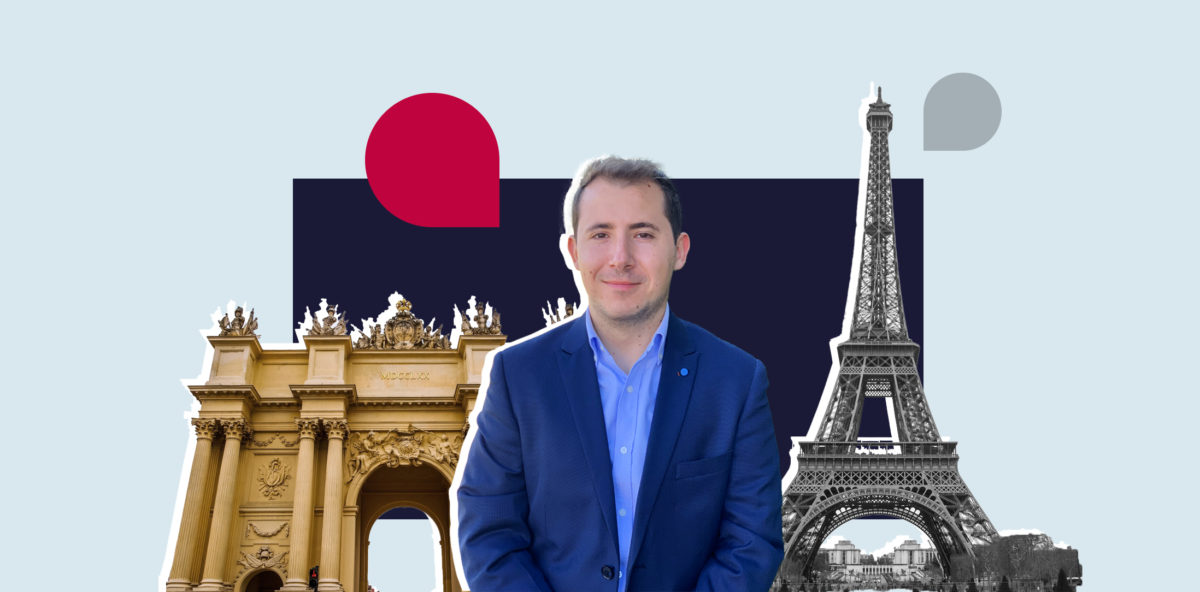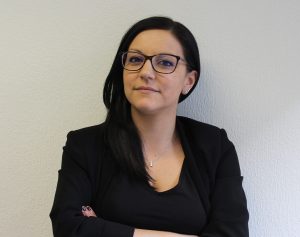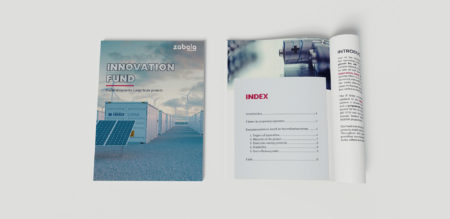
News
EU increases R&D efforts to address virus crisis
The actions include extended deadlines in Horizon 2020 and additional funding opportunities for viral research.
INTERVIEW
We interviewed Javier Lahuerta, leader of Zabala Innovation's Regions Area

The innovation and self-development of companies are being replicated in regions and cities, and to support them in this process of implementation, cooperation, and improvement, the Regions Area was created at Zabala Innovation. It is made up of a multidisciplinary team that deals with aspects as diverse as energy, mobility, sustainability, and budget management. Its leader, Javier Lahuerta, analyses the main funding programmes and the challenges facing European regions.
Some of the most relevant concepts in the area are ecosystems, synergies, or the quintuple helix of innovation. Successful projects cannot be developed if there is no public-private cooperation to achieve success at the end of the project. Collaboration between all the agents in the territory, public administrations, companies, knowledge centres, civil society, and the media is essential for the development of innovation to move from paper to day-to-day reality.
It is not surprising that the most innovative cities and regions are among those that have worked the most with European projects. Amsterdam and Rotterdam in the Netherlands, Hamburg, and Munich in Germany, or Madrid, Santander, or Valencia in Spain are among the smartest cities in each of their countries. On the other hand, regions such as Lombardy and Tuscany in Italy or the Basque Country and Navarre in Spain are benchmarks for their quality of life. And they all have one thing in common, their participation in European projects. In addition to involving their main Directorates-General, such as Mobility or Transport, they also involve other bodies such as the police or the health services.
There are many European programmes that regional and local administrations should be constantly mapping, internally or with external advice. The main programmes are Horizon Europe, to be able to choose to develop pilots to make our regions sustainable and smart, or LIFE to take care of the environment, circular economy, or energy transition.
In addition, there are other specific programmes to develop the territorial strategy, such as Interreg Europe or the cross-border or regional sub-programmes that seek collaboration and the exchange of knowledge between public administrations to make progress towards a more cohesive and coordinated Europe. Or the European Innovative Ecosystems, which seek to promote improvements in European innovation ecosystems.
It is very important that the regions also have the I3 programmes in place, which finance private innovative projects related to the RIS3 smart specialisation strategies and promote a dynamic, innovative, and strong entrepreneurial ecosystem. Or finally, the European Urban Initiative (EUI) programme, supports urban areas with funds and advice to develop projects that will turn them into benchmark cities and regions in terms of sustainability, smartness, and equity.
There are European initiatives for those cities and regions that are starting in European projects but have a clear strategy, such as European Green Capital, European Design Capital, European Innovation Capital, European Youth Capital, or European Smart Tourism Capital. Any self-respecting city or region should aim to be eligible to apply for, and even win, these awards. Winning is an important recognition at the European level and will mean a year of numerous activities on the theme for the city, as well as opening the door to many other European projects and initiatives. But simply the fact of presenting is an incentive to start mobilising the entire innovation ecosystem and stakeholders aligned with the theme.
Here in Spain, we have had several examples of award-winning cities and finalists such as Vitoria, the winner of the European Green Capital, or the finalist Seville. Or Valencia, finalist in the European Innovation Capital, but the winner of the European Design and European Smart Tourism Capital. This has helped these cities to be very well positioned in European projects, and to have been selected in the European Commission’s Mission of 100 climate neutral cities 2030.
It is important to have a strategy based on innovation in the present. We must visualise where we are and where we want to go, subdividing the path into stages and projects in which packages of changes and innovations can be introduced that help to dynamise the territory.
Several European programmes can help in this process, such as Interreg or European Innovative Ecosystems. These programmes can favour the development of strategies and synergies that boost cities and regions, making them more dynamic and innovative. The European Commission prepared this tool to identify the most dynamic and innovative regions in Europe.
On the other hand, the I3 programmes or the calls for Innovative Public Procurement of Horizon Europe or LIFE can introduce innovative projects and pilots that boost the development of the regions. These programmes can be used to work on specific projects in our territories.
The lack of a long-term strategy can result in cities and regions living and working to meet today’s needs without worrying about the needs of the future. Therefore European programmes can help plan policy and legislative development by focusing on important issues such as mobility, waste management, promoting responsible digitisation in schools or better social integration.
Linked to the field of regions, what type of projects is Zabala Innovation working on the most?
In the calls for specific programmes such as Interreg or European Innovation Ecosystems, in the European Missions focused on cities (100 Climate Neutral and Smart cities) and the Climate mission focused on regions (Adaptation to Climate Change).
In addition, we also work on a multitude of calls for other Horizon Europe R&D&I programmes (in clusters 1,2,3,4, 5 and 6 of pillar II), LIFE (Climate Change, Nature and Biodiversity, Circular Economy, and Clean Energy transition) or CEF Digital or CEF Transport focused on direct investments.
We have a range of more than one hundred clients at local or regional level: cities, associations of municipalities in regions with demographic challenges, provinces, and regional governments throughout Spain. Between the European projects of the multiannual financial framework and the projects with NGEU funds, at Zabala Innovation we have a large critical mass of public administrations that want to work with us to develop their innovation strategies and projects.
Until a few years ago only a handful of cities and regions were aligned with European calls and programmes because they were not seen as a priority. But in recent years, many cities see that participation in European projects can be an opportunity to find funding and a source of ideas to innovate and implement new systems and technologies. Moreover, since the Covid-19 pandemic, this need has increased and accelerated. As municipalities and regions improve their services and quality of life, the rest will be forced to follow in their footsteps, and collaborative and innovative projects will become increasingly important. Those who do not enter this dynamic will be condemned to offer worse services to their citizens. Because those who do not innovate will be lost.
In this video you can learn more about the work of the Regions Area of Zabala Innovation.

News
The actions include extended deadlines in Horizon 2020 and additional funding opportunities for viral research.

Opinion
HORIZON EUROPE

Margherita Volpe
Security, Space & Defence Knowledge Area Leader

Publication
INNOVATION FUND
Do you want to present your project with a chance of success to the Innovation Fund (IF)? Our team of experts has developed this guide to help you understand how to submit your large-scale project
We provide advice to activities that encourage innovation, aimed at promoting the development of new innovative markets from the demand side, through public procurement.
Europe offers many opportunities to support and foster Research, Development and Innovation actions. Competition is high and being well positioned among stakeholders active in each sector requires a well thought-out plan of action and an active way of promoting visibility in Brussels.
We collaborate with public administrations to promote innovation and assist companies in integrating innovation into their overall strategy.
This website uses cookies so that we can provide you with the best user experience possible. Cookie information is stored in your browser and performs functions such as recognising you when you return to our website and helping our team to understand which sections of the website you find most interesting and useful.
Strictly Necessary Cookie should be enabled at all times so that we can save your preferences for cookie settings.
This website uses Google Analytics to collect anonymous information such as the number of visitors to the site, and the most popular pages.
Keeping this cookie enabled helps us to improve our website.
Please enable Strictly Necessary Cookies first so that we can save your preferences!
This website uses the following additional cookies:
(List the cookies that you are using on the website here.)
Please enable Strictly Necessary Cookies first so that we can save your preferences!